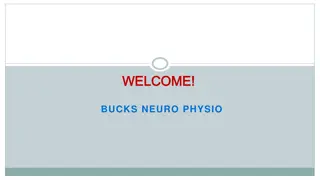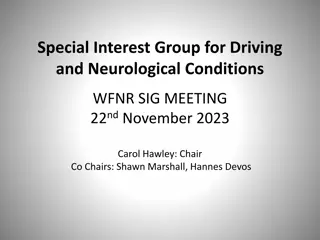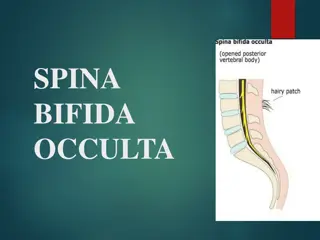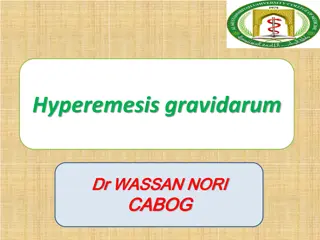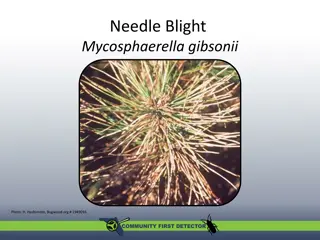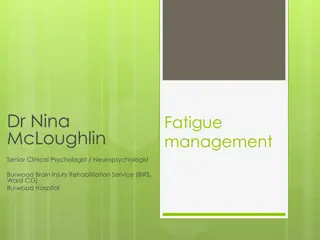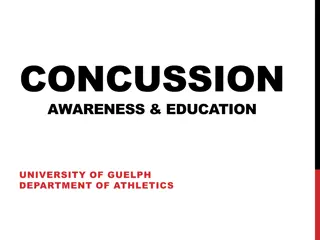Understanding Neurological Conditions: Clinical Slides and Symptoms
This presentation covers various neurological conditions including oculomotor nerve palsy, Horner's syndrome, and shingles caused by the varicella-zoster virus. It explains the symptoms, causes, and characteristics of these conditions with accompanying clinical slides. Learn about the signs and symptoms of shingles, nerve palsies, and their implications on the nervous system.
Download Presentation

Please find below an Image/Link to download the presentation.
The content on the website is provided AS IS for your information and personal use only. It may not be sold, licensed, or shared on other websites without obtaining consent from the author. Download presentation by click this link. If you encounter any issues during the download, it is possible that the publisher has removed the file from their server.
E N D
Presentation Transcript
SO4 - L6 Oculomotor nerve = medial rectus, superior rectus, inferior rectus, inferior oblique Trochlear nerve = superior oblique. abducent nerve = lateral rectus.
Horner's Horner's Syndrome Syndrome a condition characterized by miosis, ptosis , and anhidrosis (absence of sweating of the face). It is caused by damage to the sympathetic nerves of the face. The underlying causes vary greatly and may include a tumor, stroke, injury, or underlying disease affecting the areas surrounding the sympathetic nerves.
caused by the varicella-zoster virus (same virus that causes chickenpox). After recover from chickenpox, the virus enters nervous system and lies dormant for years.Eventually, it may reactivate and travel along nerve pathways to the skin producing shingles. The reason for shingles is unclear. But it may be due to lowered immunity to infections as persons grow older. Shingles is more common in older adults and in people who have weakened immune systems. A person with shingles can pass the varicella-zoster virus to anyone who isn't immune to chickenpox. This usually occurs through direct contact with the open sores of the shingles rash. Once infected, the person will develop chickenpox, however, not shingles
The signs and symptoms of shingles usually affect only a small section of one side of the body. These signs and symptoms may include: Pain, burning, numbness or tingling Sensitivity to touch A red rash that begins a few days after the pain Fluid-filled blisters that break open and crust over Itching Some people also experience: Fever Headache Sensitivity to light Fatigue
Pain is usually the first symptom of shingles. For some, it can be intense. Depending on the location of the pain, it can sometimes be mistaken for a symptom of problems affecting the heart, lungs or kidneys. Some people experience shingles pain without ever developing the rash. Most commonly, the shingles rash develops as a stripe of blisters that wraps around either the left or right side of torso. Sometimes the shingles rash occurs around one eye or on one side of the neck or face.
Postherpetic neuralgia. For some people, shingles pain continues long after the blisters have cleared.It occurs when damaged nerve fibers send confused and exaggerated messages of pain from the skin to brain. Vision loss. Shingles in or around an eye (ophthalmic shingles) can cause painful eye infections that may result in vision loss. Neurological problems. Depending on which nerves are affected, shingles can cause encephalitis, facial paralysis, or hearing or balance problems. Skin infections. If shingles blisters aren't properly treated, bacterial skin infections may develop.
Diagnosis Shingles is usually diagnosed based on the history of pain on one side of body, along with the rash and blisters. Treatment prompt treatment with antiviral drugs(Acyclovir, Famciclovir, and Valacyclovir) can speed healing and reduce risk of complications. For severe pain, we can use the following: Capsaicin topical patch (Qutenza) Anticonvulsants, such as gabapentin (Neurontin) Tricyclic antidepressants, such as amitriptyline Numbing agents, such as lidocaine, delivered via a cream, gel, spray or skin patch Medications that contain narcotics, such as codeine Shingles generally lasts between two and six weeks.
Neurofibromatosis Type 1 (Von Recklinghausen's Disease) is one of the most common genetic disorders that cause: cutaneous neurofibromas (benign peripheral nerve tumors) pigmented lesions of the skin called caf au lait spots, freckling in non-sun-exposed areas such as the axilla, hamartomas of the iris termed Lisch nodules. Patients with NF1 are at increased risk of developing nervous system neoplasms
Neurofibromatosis Type 2 is rare genetic disorder characterized by the development of bilateral (acoustic neuromas/vestibular schwannomas) in > 90% of individuals who inherit the gene. Patients with NF2 also have a predisposition for the development of meningiomas, gliomas, and schwannomas of cranial and spinal nerves
Tuberous Sclerosis (Bourneville's Disease) Tuberous sclerosis is a genetic disorder characterized by: Cutaneous lesions. Seizures (infantile spasms). Mental retardation. The cutaneous lesions include: Facial angiofibromas( Adenoma sebaceum). Ash leaf shaped hypopigmented macules. Shagreen patches (yellowish thickenings of the skin over the lumbosacral region of the back). Depigmented nevi. Tuberous sclerosis patients are at increased risk of developing ependymomas and childhood astrocytomas.


